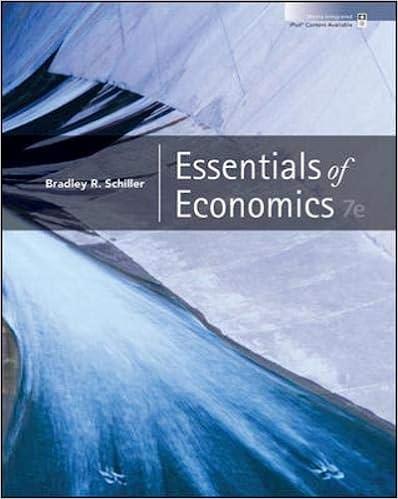Question
National-Income Determination (Keynesian Model): Two Sectors Firms use factors of production (labor, capital, land) to produce final goods and services Households earn income Y from
National-Income Determination (Keynesian Model): Two Sectors
Firms use factors of production (labor, capital, land) to produce final goods and services
Households earn income Y from offering factors of production, then either consume it or save Y C +S
Households' behaviour is described by a consumption function C f(Y) = aY +b, (2) or simply, C(Y) = aY +b
b > 0 "autonomous consumption"
0 < a < 1 "marginal propensity to consume" (MPC)
Saving function is implied by (1) and (2). Let S(Y) be saving function: S(Y) = Y C(Y) = (1a)Y b
To make the National Income Model more realistic, we include government expenditure, G, and taxation T in the model. The commodity market is now characterized by the following system of equations: Y = C + I + G, C = a(Y T) + b, T = tY.
The first equation means that the national income is equal to the sum of consumption, investments, and government expenditure in the economy. The second equation means that consumption depends on the net income Y T. The last equation T = tY means that the total tax is proportional to national income Y .
Suppose first that the investments I and government expenditure G are exogenous.
1. Show that Y = I+G+b / 1 + a(t1) and hence state what happens to Y when (1) G increases and (2) t increases.
2. What is the multiplier for G? Now suppose that government expenditure G is exogenous, but the investments I are endogenous and depend on interest rate r, I = cr + d. The money market is characterized by the following system of equations Ms = 2375, L1 = 0.1Y, L2 = 25r + 2000
3. Derive the LM-Schedule using the equations for the money market.
4. Derive the IS-Schedule using the equations for the commodity market, assuming that G = 20, a = 1, b = 80, c = 20, d = 1000, t = 0.2.
5. Calculate the equilibrium Y and r using the IS-LM schedules.
6. In order to increase the national income Y , the government increases t from 0.2 to 0.3. Do you think the government will achieve the intended outcome, i.e., increasing Y ? Explain your answer.
Step by Step Solution
There are 3 Steps involved in it
Step: 1

Get Instant Access to Expert-Tailored Solutions
See step-by-step solutions with expert insights and AI powered tools for academic success
Step: 2

Step: 3

Ace Your Homework with AI
Get the answers you need in no time with our AI-driven, step-by-step assistance
Get Started


